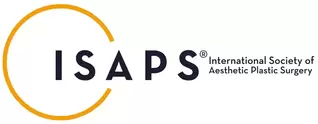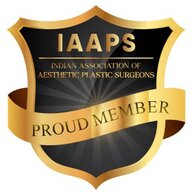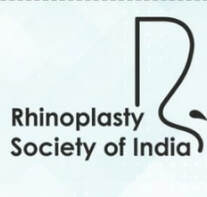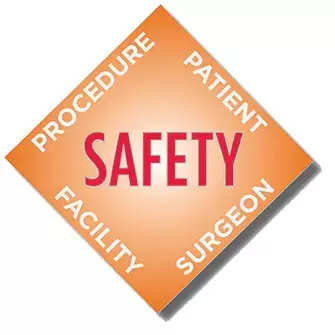|
As in all injuries, burns end up as scars. The deeper burns usually give rise to problem scars. These scars can be a cause of disability and impair quality of life of the affected individual. It can lead to problems relating to self-esteem. However, it is possible to improve these scars with the help of restorative surgery. This forms one of the most rewarding specialties of plastic surgery. Restoration means an improvement of both the form and function of the affected part. How do burn scars lead to impairment of function? Scars differ from the native tissue it replaces. They are less elastic and tend to contract with time. Due to this intrinsic property of contraction, scars reduce the movement of structures associated with it. For example, scars stretching across the front (anterior surface) of the elbow can reduce the ability to straighten out the elbow. This leads to a reduction in function of the affected upper limb. In a manual laborer, this can mean the loss of ability to earn his/her livelihood. Scars also look and feel different compared to the unaffected (native) skin. This causes disfigurement. Deformity due to scars can make an individual shun social encounters. What are the indications for surgery for burn scars? They mainly done for two reasons: 1. Functional: When the scar impairs the function of the affected part. Burns affecting the hand may prevent the individual from using the part. With surgical treatment, it is possible to regain useful function of the hand. 2. Cosmetic: Scars can result in deformities. It is usually possible to surgically modify them and improve their appearance. Who are good candidates for burn scar surgery? Good candidates include those who are in good health and have reasonable expectations about the corrective surgery. When does one undergo surgical correction of burn scars? Scars are living tissues which undergo change in a appearance and texture with time. This is sometimes referred to as maturation of a scar. This can around eighteen months and surgery for scars are undertaken once the scars mature. However, in certain instances when the scars are associated with severe functional problems they are corrected earlier. For example, the involvement of the eyelids with scars can result in an absence of eyelid closure. This can lead to ulceration of cornea and blindness. In such a situation scars are treated without waiting for the scars to mature. What are the techniques used in scar surgery? Generally, the scars are cut and the resulting defect (gap) is covered either with neighboring tissues (local flaps) or skin grafts. The exact technique chosen depends on the deformity, treatment options and aesthetic and reconstructive goals of the patient. It is often possible to treat a deformity by more than one technique. Some of the procedures include: Skin grafts: These involve the transfer of the outer layers of the skin to cover a wound elsewhere. The area from where the grafts are obtained heal by itself. Grafts are an attractive option since they are abundantly available. Skin grafts tend to undergo contraction in the postoperative period. Because of this use of splints and pressure garments are important during the postoperative period. Flaps: They are tissues with the associated blood vessels transferred for coverage of a defect. They provide thicker tissues compared to skin grafts. Flaps closely mimic the native tissue in appearance and texture. Thus, they are usually aesthetically superior when compared to skin grafts. Flaps do not contract like skin grafts and once the wounds heal they are easier to manage and do not require rigorous use of splints. Tissue expanders: These are devices which are placed surgically underneath the skin adjacent to a scarred area. During the follow-up visits, they are progressively filled with saline. The inflation of the expanders causes the overlying tissues including skin to get stretched. Once a critical volume is achieved the expanders are removed and the extra skin is used to cover the scarred area. The advantage of such a procedure is that they provide tissues which bear a close resemblance to the native (original) tissue. They are frequently used to treat scars of the scalp. The use of adjacent scalp tissue enables the scar the be replaced with hair-bearing skin. Serial excision: Due to the size of a scar it may not be possible to close the wound edges after removal of the scar. During serial excision, this process is done in stages when a part of the scar is removed during each step. This takes advantage of the increased laxity of the tissues as they respond to the increased tension at the operated site. The advantage of serial excision is that they help narrow a broad scar without the use of additional grafts or flaps. What type of anesthesia is used for burn surgery? Surgery for burn scars is done under local or general anesthesia. General anesthesia is used in children and in adults when the area being treated is extensive. Local anesthesia is used in adults when the area affected is small. What is the recovery following a burn scar surgery? Burn scar surgery is usually performed as a short stay procedure. Patients can return home the next day. They need to come for follow-up visits for the change of dressings and suture removal. Splints are continued after the surgery till the scars mature. Pressure garments are worn once the wounds have settled. They help in reducing the swelling and discomfort at the operated site. Patients can usually return to light work one week after the procedure. What are the measures taken during follow-up of burn scar surgery? In addition to the follow-up visits, patients are advised to use splints and pressure garments. Physical therapy is important for maintaining adequate range of motion and to keep the treated areas supple. Why are splints used? They help in resisting the contractile forces of a scar. During the early postoperative period, they are worn constantly. Later on, they are used during the night. What are the benefits of burn scar surgery? They help the person regain useful function of the affected part. This can mean the ability to earn and look after oneself. Burn scar surgery also improves the appearance of the affected part. They are associated with improvement in self-esteem and confidence. For more information on scars, visit here. In case of any doubts, we would be glad to hear from you.
Comments are closed.
|
AuthorI like to keep it simple. CategoriesArchives
March 2024
Categories |
- Home
-
Cosmetic
- Fat grafting
- Swellings and moles
- Scar revision
- Leukoderma (Melanocyte transfer)
- Hair transplant
- Facial rejuvenation procedures
- Nose job (Rhinoplasty)
- Cleft lip nose correction
- Ear (Otoplasty)
- Lip reduction
- Breast augmentation
- Breast reduction
- Tuberous breasts
- Axillary breasts
- Gynecomastia
- Liposuction
- Brachioplasty (Arm contouring)
- Abdominoplasty (Tummy tuck)
- Female genital rejuvenation
-
Reconstructive
- Contact
- Blog
- Home
-
Cosmetic
- Fat grafting
- Swellings and moles
- Scar revision
- Leukoderma (Melanocyte transfer)
- Hair transplant
- Facial rejuvenation procedures
- Nose job (Rhinoplasty)
- Cleft lip nose correction
- Ear (Otoplasty)
- Lip reduction
- Breast augmentation
- Breast reduction
- Tuberous breasts
- Axillary breasts
- Gynecomastia
- Liposuction
- Brachioplasty (Arm contouring)
- Abdominoplasty (Tummy tuck)
- Female genital rejuvenation
-
Reconstructive
- Contact
- Blog
You can leave us a comment using the contact form below.
We shall get back to you at the earliest.
We shall get back to you at the earliest.
Links
- Face procedures | Rhinoplasty, Otoplasty, Lip reduction, Fat grafting
- Body procedures | Gynecomastia , Breast reduction, Abdominoplasty, Brachioplasty, Liposuction
- Skin procedures | Scar revision, Moles, Leukoderma surgery
Let's be friends !
Follow us at Facebook and Twitter.
Follow us at Facebook and Twitter.
Vectors designed by Freepik
© 2024 Amicus Clinic (Plastic Surgery Centre, Trivandrum). All rights reserved.
© 2024 Amicus Clinic (Plastic Surgery Centre, Trivandrum). All rights reserved.
 RSS Feed
RSS Feed



